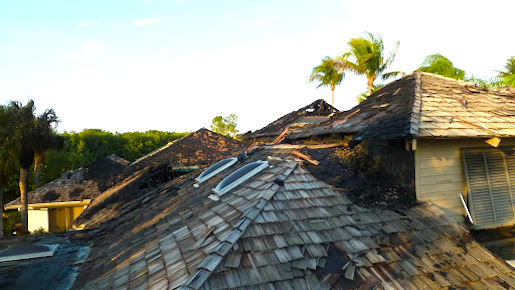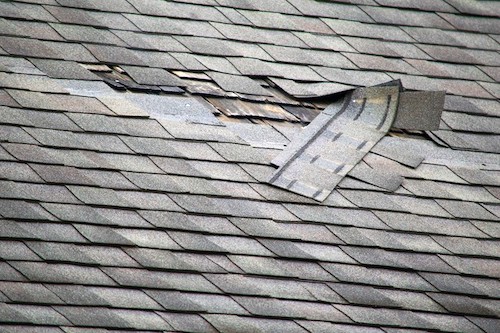
Living on the farm is no joke, most of the properties we own and operate on consist of many acres, homes, barns, garages, and storage sheds. These properties are also full of trees and shrubs that grow naturally, giving the properties a real outdoor feel when we are riding our horses. Keeping these properties up is not cheap, especially in a place like Florida where property prices are high, rains fall heavy, and the trees on the farm are prone to losing a branch or two as coastal winds blow through on occasion. I wanted to get this out for all my fellow farmers in Florida that deal with the same elements we do and may not realize the importance of roof inspections. Preventative measures will save you time and money in the long run. So here are some tips to consider when inspecting the roof on any structure on your Florida farm.
Is It Time To Replace Your Roof?
We don’t pay much attention to our roofs until they start leaking, or materials begin to rip off as the result of poor weather conditions. Even before there is visible damage, there could be other conditions happening below the surface. Dry rot, mold, infestations, and other similar problems may exist below the surface and are typically not noticed unless you have an inspection. According to the roofing contractors association, regular inspections for potential issues should be performed twice a year. Homes closer to the Florida coast line should check more frequently because of the moisture.
We recommend that you hire professional help when inspecting your roof for damage. Still, if you are going to attempt to fix it yourself, we suggest that you recruit a family member or friend to assist you for safety reasons. A professional roofing contractor will help you navigate the process and ensure your roof replacement meets Florida building codes.

Common Signs of Roof Damage:
- Missing shingles
- Visible mold or moss
- Sagging areas, soft to the step
- Holes in the roof or signs of rot
- Signs of water damage or leakage
- Loose, damaged or cracked shingles
Small leaks and the spread of rot can be fixed if caught in time. Having a bi-annual inspection will help avoid extensive damage to the roof, and avoid a potential roof collapse. Maintaining the roof and conducting regular visual checks will increase the life span of the materials. Repairing the roof as problems surface is a great way to avoid significant repair costs.
Depending on the materials used, here is a general recommendation schedule for replacing your roof:
- Composition shingles: 12 to 20 years
- Asphalt shingles: 15 to 30 years
- Wood shingles: 20 to 25 years
- Rubber roofs: 30 to 35 years
- Metal roofs: 50 to 75 years
Identify Leaks and Document Everything
Roof leaks might not be evident at first. Unless you spend ample time in your attic space, chances are, leaks won’t become noticed until they are a significant problem. There are several signs to look for, which will indicate that you might have a leak. It would be best if you documented these issues as they arise for your own records, but also document for the insurance company, and your roofing contractor.

Paper Trail: Keep a record of leaks, storm damage, repairs, and costs associated with repairs. These records will help you keep track of the roof’s history, installation dates, and repair dates. If there were any warranties offered with the repair, this would become a useful reference when needed.
Check Shingles: Heavy rains and strong winds can damage your shingles. After a storm, take the time to check your roof for possible damage. Shingles should be tight, nothing lose, and nothing out of place. If you find tears, cracks, damage, or buckling, it means the rooftop needs to be repaired immediately. Shingles should look healthy, and the granules should be present. If the roof is extremely worn, and there are no longer granules, it might be time to replace your roof.
Metal Flashing: Check your flashing around the vents, skylights, and the edges of the roof, flashing seals the seams of the roof from rain and debris. The flashing should look uniform and installed correctly. Damaged flashing could allow water and unwanted guests into your attic space. Roof rats in Florida are a great example of a pest you do not want entering your attic space.
Beware of Roof Rot: Replace any rotting wood before further damage occurs to your home. Rotting wood is not safe and can make your roof vulnerable to unwanted guests. Replace rotting wood as soon as possible.
Pressure Wash Your Roof: Moss looks cool in fish tanks, even in the everglades, but moss on the roof of your Florida home is not suitable for any roof type. You should have your roof pressure washed yearly and treated if possible.
The Florida weather will ultimately decide how long your roof lasts. Materials may wear out quickly because of severe storms or humidity. Get on the roof and check for damage after harsh wind and rain storms. Identifying minor issues before they become major problems is a cost-effective way to extend the lifespan of your roof.
Contact a professional roofing company near you to get professional help and guidance if you are experiencing issues.